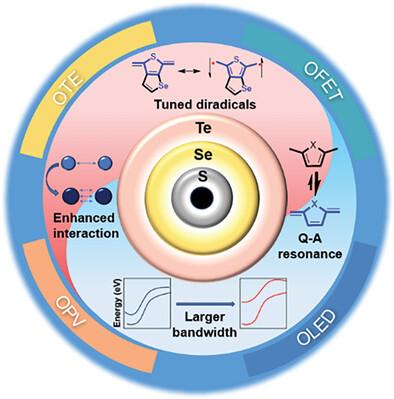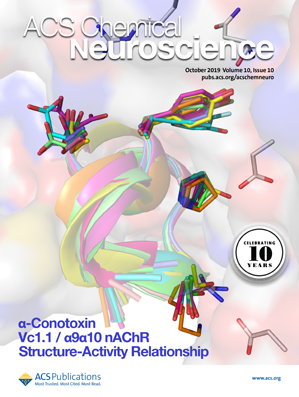Regulating Optoelectronic and Thermoelectric Properties of Organic Semiconductors by Heavy Atom Effects
IF 4.1
3区 医学
Q2 BIOCHEMISTRY & MOLECULAR BIOLOGY
引用次数: 0
Abstract
Heavy atom effects can be used to enhance intermolecular interaction, regulate quinoidal resonance properties, increase bandwidths, and tune diradical characters, which have significant impacts on organic optoelectronic devices, such as organic field-effect transistors (OFETs), organic light-emitting diodes (OLEDs), organic photovoltaics (OPVs), etc. Meanwhile, the introduction of heavy atoms is shown to promote charge transfer, enhance air stability, and improve device performances in the field of organic thermoelectrics (OTEs). Thus, heavy atom effects are receiving more and more attention. However, regulating heavy atoms in organic semiconductors is still meeting great challenges. For example, heavy atoms will lead to solubility and stability issues (tellurium substitution) and lack of versatile design strategy and effective synthetic methods to be incorporated into organic semiconductors, which limit their application in electronic devices. Therefore, this work timely summarizes the unique functionalities of heavy atom effects, and up-to-date progress in organic electronics including OFETs, OPVs, OLEDs, and OTEs, while the structure-performance relationships between molecular designs and electronic devices are clearly elucidated. Furthermore, this review systematically analyzes the remaining challenges in regulating heavy atoms within organic semiconductors, and design strategies toward efficient and stable organic semiconductors by the introduction of novel heavy atoms regulation are proposed.

通过重原子效应调节有机半导体的光电和热电特性
重原子效应可用于增强分子间相互作用、调节醌共振特性、增加带宽和调整二叉特性,这对有机场效应晶体管(OFET)、有机发光二极管(OLED)、有机光伏(OPV)等有机光电器件具有重要影响。同时,在有机热电(OTE)领域,重原子的引入被证明可以促进电荷转移、增强空气稳定性并改善器件性能。因此,重原子效应正受到越来越多的关注。然而,有机半导体中重离子的调控仍面临巨大挑战。例如,重原子会导致溶解性和稳定性问题(碲的替代),缺乏将其纳入有机半导体的多功能设计策略和有效合成方法,从而限制了其在电子器件中的应用。因此,本研究及时总结了重原子效应的独特功能,以及包括 OFET、OPV、OLED 和 OTE 在内的有机电子学的最新进展,同时清晰地阐明了分子设计与电子器件之间的结构-性能关系。此外,本综述还系统分析了有机半导体中重金属原子调控所面临的挑战,并提出了通过引入新型重金属原子调控来实现高效稳定有机半导体的设计策略。
本文章由计算机程序翻译,如有差异,请以英文原文为准。
求助全文
约1分钟内获得全文
求助全文
来源期刊

ACS Chemical Neuroscience
BIOCHEMISTRY & MOLECULAR BIOLOGY-CHEMISTRY, MEDICINAL
CiteScore
9.20
自引率
4.00%
发文量
323
审稿时长
1 months
期刊介绍:
ACS Chemical Neuroscience publishes high-quality research articles and reviews that showcase chemical, quantitative biological, biophysical and bioengineering approaches to the understanding of the nervous system and to the development of new treatments for neurological disorders. Research in the journal focuses on aspects of chemical neurobiology and bio-neurochemistry such as the following:
Neurotransmitters and receptors
Neuropharmaceuticals and therapeutics
Neural development—Plasticity, and degeneration
Chemical, physical, and computational methods in neuroscience
Neuronal diseases—basis, detection, and treatment
Mechanism of aging, learning, memory and behavior
Pain and sensory processing
Neurotoxins
Neuroscience-inspired bioengineering
Development of methods in chemical neurobiology
Neuroimaging agents and technologies
Animal models for central nervous system diseases
Behavioral research
 求助内容:
求助内容: 应助结果提醒方式:
应助结果提醒方式:


